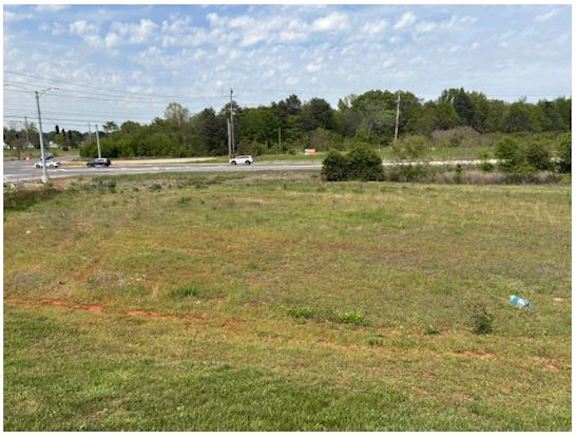LCWSA CONSULTANT: Spending based on overinflated growth estimates
Published 6:30 am Tuesday, September 5, 2017
The LCWSA board spent millions on unneeded infrastructure over the past several years based on overestimated numbers provided by its former engineer, a consultant said this week.
Barney Fullington with Franklin, Tennessee-based Inflo Design Group LLC, presented some stark realities to board members as part of Phase 1 of a three-phase strategic plan. He also presented solutions on how to steady the utility moving forward.
Trending
Fullington pointed out that LCWSA, which is now more than $95 million in debt, has the highest water rates in North Alabama. LCWSA’s average water bill is more than $50, while neighboring utilities charge $20 per month.
The main reason for the debt and the higher cost to customers, Fullington said, is the utility seemingly built out its infrastructure more quickly than it picked up new industrial and residential customers. Much of that infrastructure was placed in what he referred to as the Southeast Pressure Zone.
Large swaths of that part of the county have been annexed by Madison and Huntsville over the last several years. It’s a growing hotbed of industrial and residential development, but the growth has been slower than what was predicted by the county’s previous engineer.
Fullington described the foundation for the utility’s growth plan, developed by the Hethcoat and Davis engineering firm, as “a little shaky.” The LCWSA board voted in May to part ways with the firm.
“I think they greatly overestimated water demand projections the led to improvements of size and the number of improvements I don’t think you needed,” Fullington told board members. “You’ve got infrastructure in the southeast that may never be used.”
Citing the projections outlined by Hethcoat and Davis, Fullington said the board had been approving projects with the assumption there would be a 10.2 million-gallon-per-day demand in 20 years. He said those numbers were based on a growth rate of 11 percent each year over the next 20 years.
Trending
“If you think you’re going to grow that much, you have to spend a lot of money to address the growth,” he said.
LCWSA Board Chairman Jim Moffatt put it bluntly: “We bought a Maserati to drive around a quarter-mile race track.”
Citing Huntsville’s master plan for development in Huntsville-annexed Limestone, Fullington explained how numbers provided to the board by Hethcoat and Davis don’t add up. He said even if Huntville’s ambitious growth plans are realized, it would equate to an annual growth rate of 4.25 percent, which would be far below the numbers provided by Hethcoat and Davis.
“That 10.2 million gallons per day number required a ton of capital improvements,” Fullington said. “It was that number that shaped capital projects.”
He didn’t necessarily chastise the board’s decision to put a water line under the Tennessee River to purchase water from Decatur Utilities because it was the cheapest water available. He added, however, what was initially pitched as a $10 million project became a $20 million project.
“If you think you’re going to use a ton of water, cheap water is the way to go,” he said.
A way forward
In discussing ways for the utility to make the most out of its current situation, Fullington advised the board to maximize the use of the Decatur water because it’s the cheapest water available. At the same meeting, LCWSA Chief Executive Officer Daryl Williamson said a final boar through rock under the Tennessee River is nearly complete, which is the final step before the pipe is pulled through.
Fullington also said much of the utility’s future will depend on the outcome of a 30-year franchise agreement between LCWSA and the city of Huntsville that expired in May. The agreement allows Huntsville to exercise an option to purchase — at a depreciated price — a portion of water infrastructure installed by LCWSA in Huntsville-annexed Limestone County. The specific portion spans from south of the CSX line in southern Limestone to Interstate 565.
If the agreement doesn’t work out in LCWSA’s favor, Fullington explained it could have a sizable impact on water demand. He also advised the board to reduce the rate of capital expenditure, particularly in that part of the county.
“Allow your revenue to catch up to your debt before incurring more debt,” he said.
In assessing the utility’s assets, Fullington said it would cost the utility more than $500 million to replace its 1,200 miles of pipe, water treatment plants, wastewater treatment plants, water booster stations and lift stations.
“If you replaced 5 miles of pipe each year, you would be done by the year 2262,” he said. “Most pipe has a service life of 100 years. The good news is, most of the pipe in your system is less than 50 years old.”
To that end, Fullington encouraged the board to implement an asset management strategy.
“It’s the best way to maximize every dollar you have in your system,” he said.
Reaction
Following Fullington’s presentation, Board Chairman Jim Moffatt seemed disheartened by the findings.
“This board didn’t get good information, and as board members, we didn’t know that,” he said. “None of us are engineers; none of us had that expertise.”
Fullington told Moffatt there was no benefit to LCWSA having just one engineer. He added the utility needs more engineering expertise on staff.
“In the past, you didn’t have that and you outsourced engineering functions,” he said. “I think it created some problems because you didn’t have any checks and balances.”





